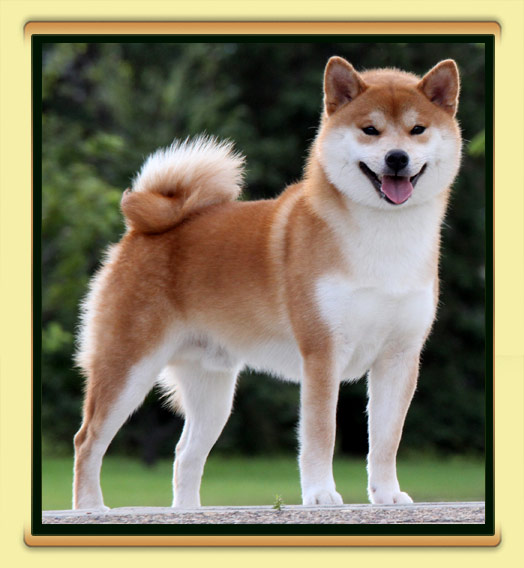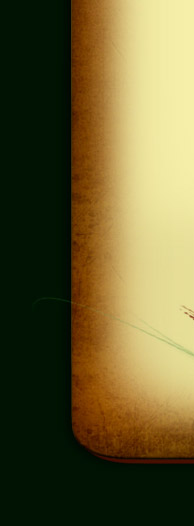


Originally, Shibas were bred to flush birds and small game and
were occasionally used to hunt wild boar. Now they are primarily
kept as pets, both in Japan and the US. There are more Shibas in
Japan than any other breed.
Around 7000 BC the ancestors of today's Shibas may have
accompanied the earliest immigrants to Japan. Archaeological
excavations of the shell-mounds left by the Jomonjin, or
Rope-Pattern People (a name derived from the pattern found on
their earthenware), show that they had small dogs in the 14.5 to
19.5 inch range.
In the third century BC, a new group of immigrants brought their
dogs to Japan These dogs then interbred with the descendants of
the Jomonjin dogs, and produced canines known to have pointed,
erect ears and curly or sickle tails. In the 7th century AD, the
Yamato Court established a dog keeper's office which helped
maintain the Japanese native breeds as an integral part of
Japanese culture. Although the country was closed to foreigners
from the 17th through 18th centuries, some European dogs and a
breed known as the Chinese Chin were imported and crossed with
native dogs living in the more populated areas. Dogs in the
countryside, however, remained relatively pure.
Originally there were three main varieties of Shiba, each named
for its region of origin: the Shinshu Shiba, from the Nagano
Prefecture; the Mino Shiba, from the Gifu Prefecture; and the
Sanin Shiba from the northeastern part of the mainland. Although
similar, the Shibas from each area contributed to differences in
breed type seen today.
From the original Japanese native dogs, six distinct "breeds" in
three different sizes developed. They are the Akita (large
size); Kishu, Hokkaido, Shikoku, Kai (medium size); and the
Shiba (small size). The small sized dog has been called the
Shiba since ancient times, and there are several theories
surrounding the development of that name. One popular
explanation is that the word Shiba means "brushwood", and the
dogs were named for the brushwood bushes where they hunted.
Another theory is that the fiery red color of the Shiba is the
same as the autumn color of the brushwood leaves. A third
conjecture is related to an obsolete meaning of the word Shiba,
referring to its small size. These explanations are often
combined and the Shiba is referred to as the "little brushwood
dog".
World War II nearly spelled disaster for the Shiba, and most of
the dogs that did not perish in bombing raids succumbed to
distemper during the post-war years.
While the Mino and Sanin Shibas became practically extinct, more
of the Shinshu Shibas survived. After the war, Shibas were
brought from the remote countryside and breeding programs were
established. The remnants of the various bloodlines were
combined to produce the breed as it is known today.
|



 |